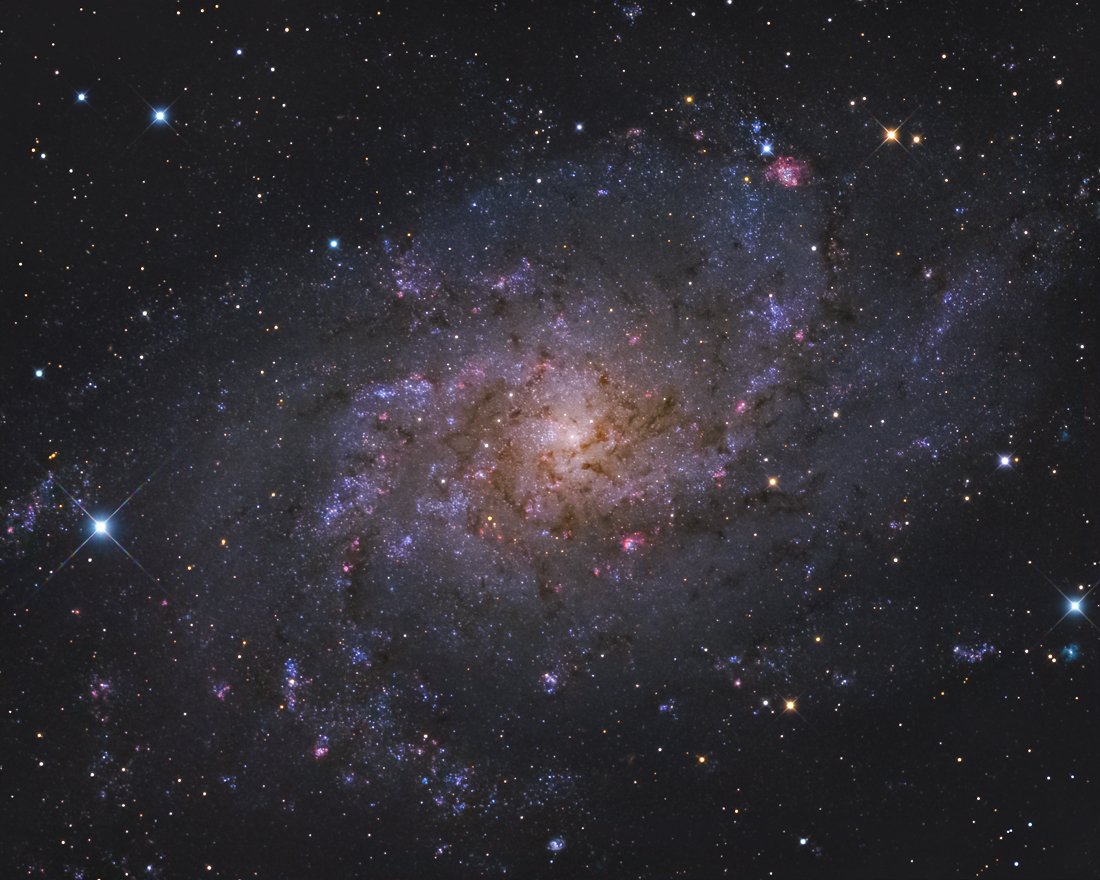Technical details:
Location / Date: Outside of Kopparberg, Västmanland, Sweden / 2017-August
Optics: Orion Optics UK AG12
Mount: 10 Micron GM1000 HPS (Unguided)
Camera: Atik One 6.0 with Astrodon 1,25" L-RGB Gen 2 E-Series Filterset
Exposure: L:56 x 240s, R: 9 x 240s, G:6 x 240s, B:10 x 240s
(cumulative exposure time is 5 hours and 24 minutes)
Processing: Pixinsight and Photoshop
Image details:
The Triangulum Galaxy is a spiral galaxy approximately 3 million light-years from Earth in the constellation Triangulum. It is catalogued as Messier 33 or NGC 598. With a diameter of about 60,000 light-years the Triangulum Galaxy is the third-largest member of the Local Group of galaxies which includes the Milky Way, the Andromeda Galaxy and about 44 other smaller galaxies. It is one of the most distant permanent objects that can be viewed with the naked eye. Triangulum may be home to 40 billion stars, compared to 400 billion for the Milky Way, and 1 trillion (1000 billion) stars for Andromeda. The disk of Triangulum has an estimated mass of (3-6) × 10^9 solar masses, while the gas component is about 3.2 × 10^9 solar masses. Thus the combined mass of all baryonic matter in the galaxy may be 10^10 solar masses. The contribution of the dark matter component out to a radius of 55 kly is equivalent to about 5 × 10^10 solar masses. (Information from Wikipedia)





